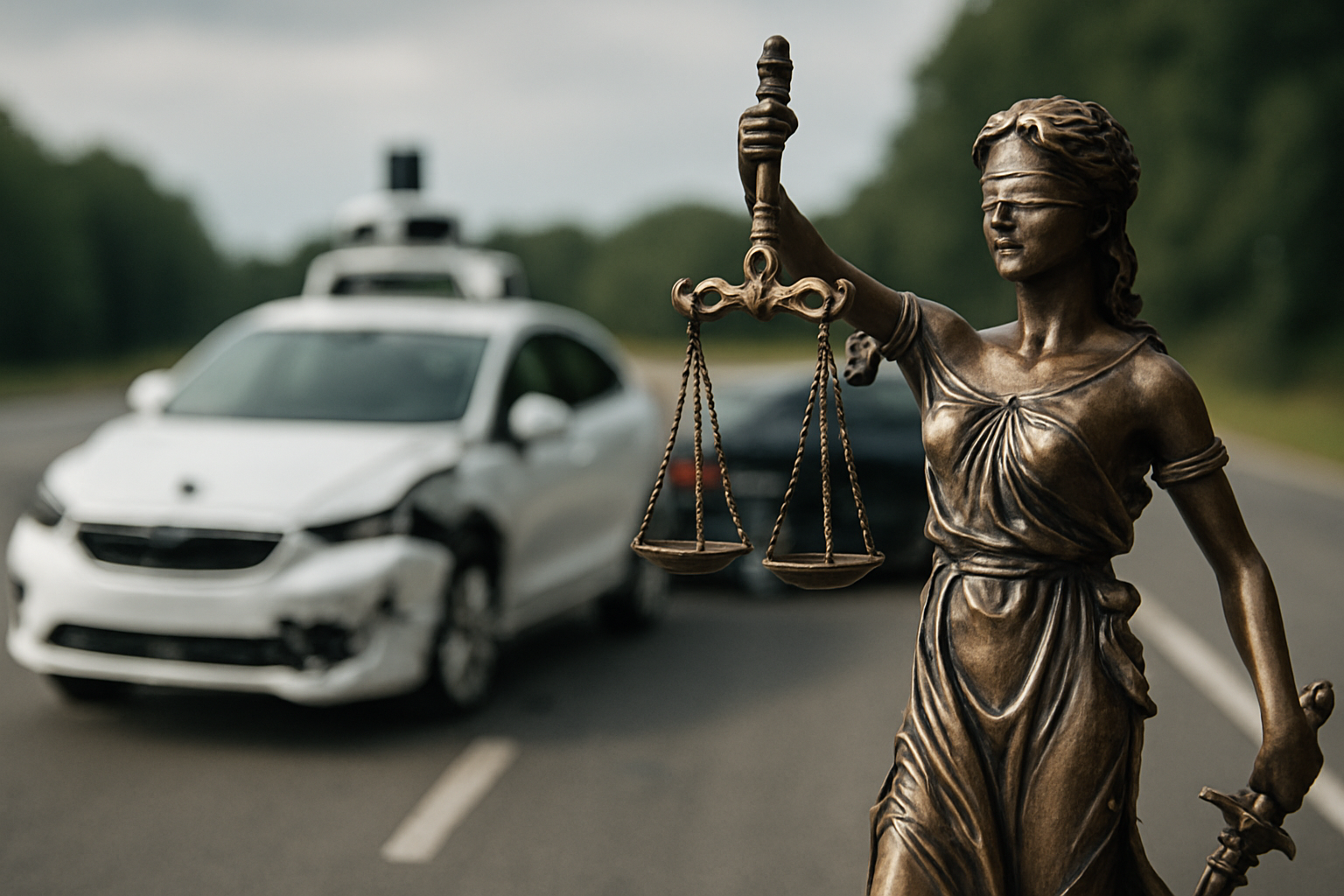Title: Navigating the Legal Maze of Autonomous Vehicle Liability
Introduction: As autonomous vehicles inch closer to widespread adoption, a complex web of legal questions emerges. Who bears responsibility when a self-driving car causes an accident? How do existing liability laws adapt to this new technology? This article delves into the evolving landscape of autonomous vehicle liability, exploring the challenges and potential solutions in this rapidly advancing field.

Traditional Liability Models and Their Limitations
Existing liability models in motor vehicle accidents typically focus on driver negligence or product liability. In cases involving human drivers, fault is generally determined based on negligence or reckless behavior. For vehicle defects, manufacturers may be held liable under product liability laws. However, these traditional models face significant challenges when applied to autonomous vehicles, where the line between human control and machine decision-making becomes blurred.
The Shifting Landscape of Fault and Responsibility
As AVs take on more driving tasks, the question of fault becomes increasingly complex. In a scenario where a fully autonomous vehicle causes an accident, should the manufacturer be held liable? What about the software developer? Or does some responsibility still fall on the vehicle owner or occupant? These questions highlight the need for a new legal framework that can adequately address the unique challenges posed by self-driving technology.
Potential Legal Approaches to AV Liability
Several approaches have been proposed to address AV liability. One suggestion is to treat autonomous vehicles as legal entities, similar to corporations, capable of bearing their own liability. Another approach involves creating a no-fault insurance system specifically for AVs, where victims are compensated regardless of who is at fault. Some experts advocate for a strict liability regime for AV manufacturers, arguing that they are best positioned to prevent accidents and absorb the costs.
The Role of Data in Determining Liability
One of the key advantages of autonomous vehicles is their ability to collect and store vast amounts of data. This data could prove crucial in determining liability in the event of an accident. However, questions arise regarding data ownership, privacy concerns, and the admissibility of such data in legal proceedings. Lawmakers and courts will need to grapple with these issues to ensure fair and accurate liability determinations.
International Perspectives and Harmonization Efforts
As autonomous vehicles cross borders, the need for international coordination becomes apparent. Different countries are taking varied approaches to AV liability, potentially creating a patchwork of regulations that could hinder the technology’s global adoption. Efforts are underway to harmonize these approaches, with organizations like the United Nations Economic Commission for Europe working on international guidelines for AV regulation.
The Impact on Insurance and Risk Assessment
The rise of autonomous vehicles is set to revolutionize the insurance industry. Traditional risk assessment models based on human driving behavior may become obsolete as AVs become more prevalent. Insurers will need to develop new models that take into account factors such as software reliability, cybersecurity risks, and the performance of various autonomous systems. This shift could lead to significant changes in how car insurance is priced and structured.
Ethical Considerations and Programmed Decision-Making
One of the most challenging aspects of AV liability involves the ethical decisions programmed into these vehicles. How should an autonomous vehicle be programmed to react in a situation where harm is unavoidable? Should it prioritize the safety of its occupants over pedestrians? These ethical dilemmas have significant legal implications and will likely be the subject of intense debate as the technology continues to advance.
The Road Ahead: Adapting Laws for an Autonomous Future
As autonomous vehicles become more prevalent, lawmakers, courts, and regulators will need to adapt quickly to address the unique challenges they present. This may involve creating new legal frameworks, updating existing laws, or developing entirely new regulatory bodies to oversee AV technology. The key will be striking a balance between fostering innovation and ensuring public safety, while also providing clarity on liability issues to all stakeholders involved.
In conclusion, the legal landscape surrounding autonomous vehicle liability is complex and rapidly evolving. As technology continues to advance, it is crucial that our legal systems keep pace, providing clear guidelines and frameworks to address the unique challenges posed by self-driving cars. By proactively addressing these issues, we can help ensure a smoother transition to an autonomous future while protecting the rights and safety of all road users.





